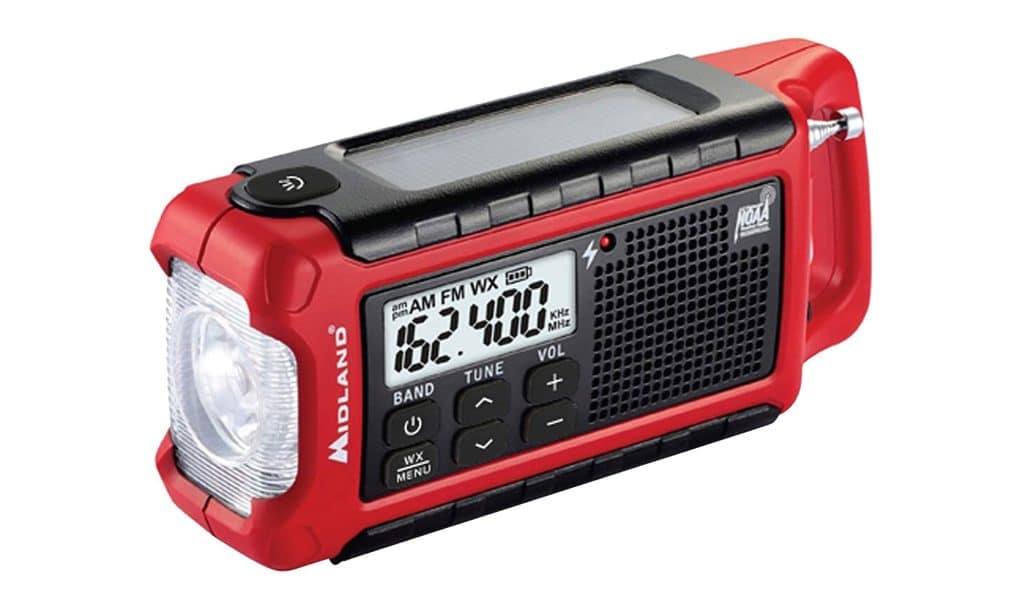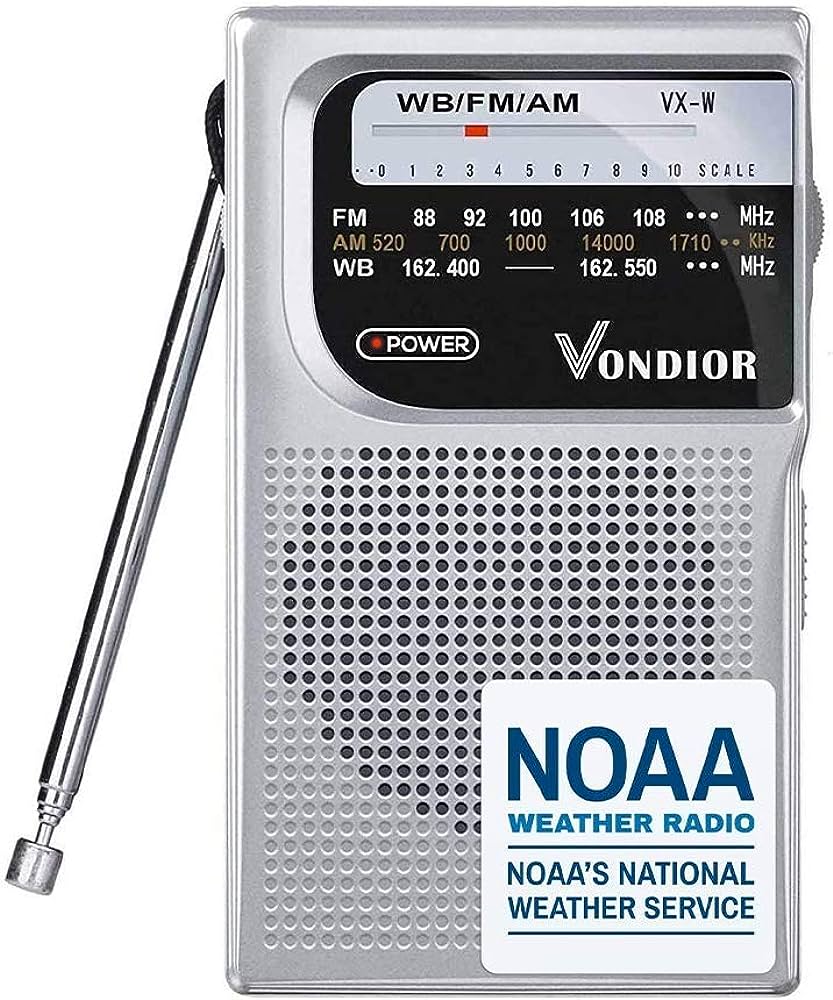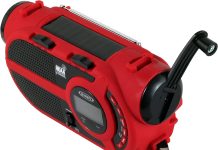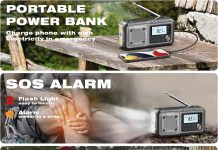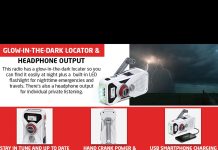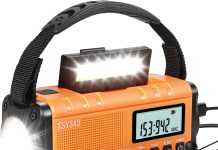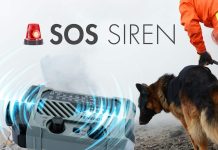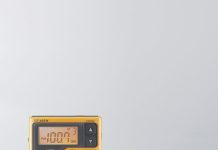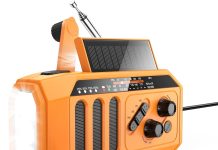Imagine a world where you never have to worry about running out of power for your radio. Picture being able to tune in to your favorite stations and stay connected to news, music, and entertainment, even when electricity is scarce.
Well, this might sound like a dream, but believe it or not, some radios operate without power.
In this article, we will explore the fascinating world of power-free radios and uncover how they work, where you can find them, and why they are becoming increasingly popular. Get ready to be amazed by the ingenuity behind these innovative devices!
Review contents
How Does a Radio Typically Work?
Electromagnetic Waves
Radios operate by receiving and decoding electromagnetic waves, a type of energy that can travel through space. Radio transmitters produce these waves and carry encoded information that can be converted into sound or data. Electromagnetic waves have different frequencies, with each frequency corresponding to a different radio station. When you tune your radio to a specific frequency, it picks up the corresponding electromagnetic waves and converts them into audible sounds.
Antennas
Antennas play a crucial role in the functioning of a radio. They capture the electromagnetic waves in the air and convert them into electrical signals.
The antenna’s length and design determine the frequencies it can pick up effectively. A taller antenna can capture longer wavelengths, corresponding to lower-frequency radio stations. In contrast, shorter antennas are better suited for higher-frequency stations. By adjusting the length and configuration of the antenna, you can fine-tune your radio’s reception capabilities.
Tuning and Reception
Tuning is selecting a specific frequency to listen to on your radio. Radios have a tuning mechanism that allows you to choose a particular station by adjusting a dial or pressing buttons. When you turn the tuning dial, you change the radio’s internal circuitry to resonate at a specific frequency.
This resonance creates a more robust electrical signal from the selected frequency, making it easier for the radio to decode and amplify the information carried by the electromagnetic waves. Various factors, such as the distance to the radio station, interference from other electronic devices, and physical obstacles, can influence reception quality.
Power Sources for Radios
Batteries
Most radios operate using batteries as their power source. These batteries provide the necessary electrical energy to power the radio’s internal circuitry, amplifiers, and speakers.
The usage time can vary depending on the type of radio and the battery capacity. Portable radios usually use disposable or rechargeable batteries, allowing you to use them on the go without the need for a direct power source.
AC Power
Radios can also be powered using conventional AC power from a wall outlet. This option is commonly used for radios that are intended for indoor use, such as tabletop or home entertainment systems.
These radios typically come with an AC power adapter that connects to the radio and plugs into a wall socket. AC power ensures a constant and reliable energy source, allowing uninterrupted listening.
Solar Power
Solar-powered radios harness the energy from the sun to generate electricity. They are equipped with solar panels that convert sunlight into electrical energy, then stored in a built-in battery. This stored energy powers the radio’s internal components. Solar-powered radios are especially useful in outdoor settings, camping trips, or areas with limited access to electricity. They offer a sustainable and environmentally friendly alternative to batteries or AC power.
Hand-Crank Power
Hand-crank radios eliminate the need for batteries or other external power sources. They feature a crank mechanism that, when turned manually, generates electrical energy. This energy charges the radio’s internal battery or powers the radio directly.
Hand-crank radios are popular for emergency preparedness kits, as they offer a reliable power source even during power outages or when batteries are not readily available.
Types of Radios that Work Without Power
Crystal Radios
Crystal radios are simple yet effective devices that can operate without power. They are primarily used for receiving AM radio signals. Crystal radios use a combination of components, including a tuned circuit, a diode (also known as a crystal detector), an earpiece, and an antenna.
The antenna captures the electromagnetic waves and feeds them into the tuned circuit, where the specific radio frequency is selected. The diode detects and rectifies the radio frequency, converting it into an audio signal amplified and heard through the earpiece. Crystal radios are fascinating examples of minimalist radio technology.
Wind-Up Radios
Wind-up radios offer a self-sufficient power solution by incorporating a hand-crank mechanism. As you turn the crank, mechanical energy is converted into electrical energy, which powers the radio. Wind-up radios often include additional features such as a built-in flashlight, mobile phone charger, or emergency siren. They are famous for outdoor activities, emergencies, or regions with unreliable access to electricity.
Solar-Powered Radios
Solar-powered radios utilize solar energy to charge their internal batteries. They feature solar panels that convert sunlight into electrical energy, which is then stored for later use. Solar-powered radios are versatile and convenient since they can be charged by placing them in direct sunlight or under artificial light sources.
In addition to using solar power as the primary energy source, many solar-powered radios also have backup options like batteries or hand-crank mechanisms for days with limited sunlight.
Batteryless Radios
Batteryless radios explore innovative power systems that do not rely on traditional batteries or external power sources. One example is energy harvesting technology, where the surrounding environment continuously generates small amounts of power. These radios can utilize various methods, such as harvesting energy from radio waves, ambient light, temperature differentials, or vibrations.
Capacitive power transfer is another emerging technology that enables charging and power delivery through wireless capacitive coupling. Batteryless radios offer the potential for sustainable and self-sufficient radio operation.
Crystal Radios
Overview
Crystal radios, sometimes called crystal sets, are simple radios that can receive AM radio signals without additional power sources.
They were popular in the early 20th century and remain a hobbyist’s favorite due to their simplicity and educational value. Crystal radios function by using the energy from the radio signal itself to power their operation, making them fascinating examples of energy conversion.
Components
Crystal radios consist of essential components: an antenna, a tuned circuit, a diode (known as a crystal detector), an earpiece, and a ground connection. The antenna captures the electromagnetic waves and feeds them into the tuned circuit, which resonates at a specific frequency, filtering out other frequencies.
The diode, typically a semiconductor crystal such as galena or germanium, rectifies the alternating current (AC) radio frequency signal, converting it into a pulsating direct current (DC) signal. The earpiece, often a tiny magnetic coil and diaphragm, converts the pulsating signal into audible sound. The ground connection is crucial as it provides a reference point for the electrical current flow.
Operation
One must first connect the antenna and ground wires to operate a crystal radio. The antenna wire is usually connected to a long metal or outdoor antenna for optimal reception. The ground wire is connected either to a metal rod driven into the ground or a conductive pipe.
Next, the user adjusts the tuning knob to select the desired radio station frequency. The tuned circuit filters out unwanted frequencies, allowing the desired station to be heard. As the radio wave enters the tuned circuit, the diode rectifies the alternating current signal, allowing only the positive half of the wave to pass through.
The earpiece converts This pulsating current into sound waves, producing the audible output. Crystal radios require no external power supply since they utilize the energy present in the radio wave itself.
Wind-Up Radios
Mechanism
Wind-up radios, or crank radios, are designed with a hand-crank mechanism to generate electrical power on demand. These radios typically have a foldable crank handle on the device’s side or top. You rotate the crank handle to generate power, activating an internal dynamo or alternator.
As the crank is turned, mechanical energy is converted into electrical energy, which charges the internal battery or directly powers the radio’s operation. The generated electrical energy is stored for future use, ensuring the radio functions even when no external power source is available.
Advantages and Limitations
Wind-up radios offer several advantages compared to traditional battery-powered radios. Firstly, they provide a reliable power source when batteries are unavailable or during power outages. This makes them an essential item for emergency preparedness kits. Secondly, wind-up radios are environmentally friendly and cost-effective since they eliminate the need for disposable batteries.
Using the hand-crank mechanism, users can generate power indefinitely without worrying about running out of battery capacity. However, wind-up radios have limitations in terms of power output.
The amount of electrical energy generated with each crank rotation is relatively small, which can limit the radio’s performance and volume level. Additionally, extensive cranking may be necessary to generate enough power for prolonged listening, requiring users to be patient and willing to put in physical effort.
Solar-Powered Radios
Solar Panels
Solar-powered radios have built-in solar panels that capture sunlight and convert it into electrical energy. The solar panels consist of multiple photovoltaic cells made from semiconductor materials. When exposed to sunlight, these cells generate a voltage difference between the front and back layers, producing an electric current.
The solar panels are typically positioned on the top or sides of the radio to maximize the surface area receiving sunlight. The electrical energy generated by the solar panels is used to power the radio’s internal components or charge a built-in rechargeable battery.
Battery Storage
Solar-powered radios often incorporate rechargeable batteries to store the electrical energy generated by the solar panels. These batteries act as a reservoir, allowing the radio to function even when sunlight is unavailable or during periods of low light intensity.
When sunlight is abundant, the solar panels charge the batteries, ensuring a constant power supply for future use. This stored energy can be used during nighttime or in shaded areas, providing uninterrupted radio operation.
Charging Options
In addition to solar power, many solar-powered radios offer alternative charging options. These radios often include a USB port or a DC input, allowing you to charge them using external power sources such as wall chargers or car adapters.
This flexibility ensures that the radio can be charged using various methods, irrespective of the availability of sunlight. Solar-powered radios with multiple charging options are ideal for diverse environments and situations where solar charging alone may not be sufficient.
Batteryless Radios
Alternate Power Systems
Batteryless radios are designed to operate without traditional batteries or power sources. These radios explore innovative power systems that utilize energy harvesting techniques or wireless power transfer technologies.
One example is ambient energy harvesting, where small amounts of power are continuously gathered from the surrounding environment. This can include harvesting energy from radio waves, thermal differences, vibrations, or ambient light sources. Batteryless radios can sustain operation without external power supplies by leveraging these unconventional energy sources.
Capacitive Power Transfer
Capacitive power transfer is a wireless charging method that enables energy transfer using capacitive coupling. In capacitive power transfer, the radio and charging device form a capacitive coupling nearby. The charging device generates an electric field, and the radio’s integrated capacitive receiver extracts energy from this field.
This energy is then converted and utilized to power the radio’s operation. Capacitive power transfer allows for efficient and wireless energy transfer, enabling the development of batteryless radios that can maintain their functionality without the limitations of traditional power sources.
Advantages of Radios that Work Without Power
Emergency Preparedness
Radios that work without power, such as wind-up or solar-powered radios, are invaluable in emergencies. During power outages or natural disasters, these radios ensure you can stay informed about important updates and instructions from authorities.
Their self-sufficient power sources eliminate the need for batteries or external power supplies, making them reliable and readily available when other communication channels may be compromised.
Environmentally Friendly
Radios that work without power contribute to a more sustainable and eco-friendly lifestyle. By reducing reliance on disposable batteries, which can be harmful to the environment if not correctly disposed of, these radios help minimize electronic waste.
Solar-powered radios, in particular, utilize a renewable and clean energy source. By harnessing the sun’s power, they have a minimal carbon footprint and reduce the demand for traditional power sources.
Portability
Radios that work without power are often designed with portability in mind. Their compact and lightweight nature makes them ideal for outdoor activities such as camping, hiking, or picnics. Whether it’s a hand-crank radio that fits in your backpack or a solar-powered radio that can be easily carried, these radios ensure you can enjoy music, news, or entertainment wherever you go without relying on electrical outlets or batteries.
Cost-Effective
Radios that work without power offer long-term cost savings. By eliminating the need for disposable batteries or frequent charging, they help reduce recurring expenses associated with traditional radios.
While some initial investment may be required for solar-powered or hand-crank radios, these costs are mitigated by their ability to provide uninterrupted listening without needing ongoing battery replacements or costly power supplies.
Limitations of Radios that Work Without Power
Limited Power Output
Radios that work without power, especially those powered by alternative energy sources like hand-cranking or energy harvesting, may have limited power output.
This can result in lower volume levels or reduced reception range compared to traditional battery-powered radios or those connected to AC power. Considering these limitations when using radios without power and adjusting expectations accordingly is essential.
Varying Reception Quality
Radios that rely on unconventional power sources may also experience varying reception quality. Factors such as the availability of sunlight for solar-powered radios or the strength and clarity of radio waves for crystal or energy-harvesting radios can affect reception.
External influences like geographical terrain, atmospheric conditions, or interference from other electronic devices can also impact reception quality. It is advisable to position the radio in areas with optimal signal strength or make necessary adjustments to improve reception.
Size and Design Limitations
Radios that work without power may have design limitations due to their reliance on alternative power sources. Solar-powered radios, for example, require space for solar panels, which can impact the overall size and aesthetics of the device.
Similarly, hand-crank radios may need a more significant mechanism to accommodate the hand-crank mechanism, making them bulkier than their battery-powered counterparts. It is essential to consider the size and design trade-offs when selecting radios that work without power.
Conclusion
Radios that work without power offer an intriguing alternative to traditional battery-powered or AC-powered radios. Whether using energy harvesting technologies, solar power, wind-up mechanisms, or crystal sets, these radios provide a self-sufficient and environmentally friendly way to listen to your favorite stations or stay informed during emergencies.
While they may have specific limitations regarding power output and reception quality, their portability, cost-effectiveness, and contribution to a more sustainable lifestyle make them valuable options for anyone seeking a radio experience without power.




